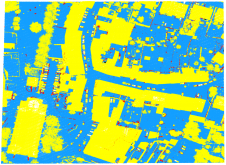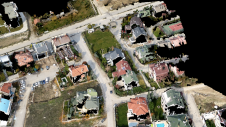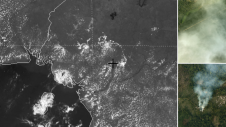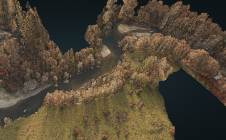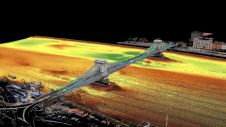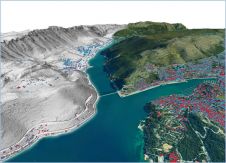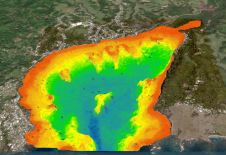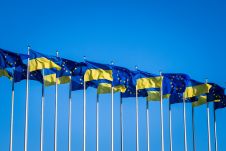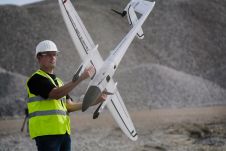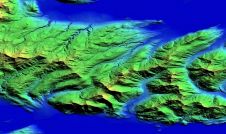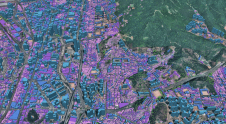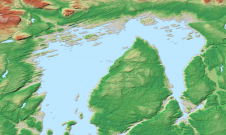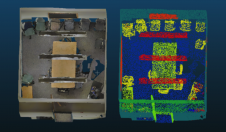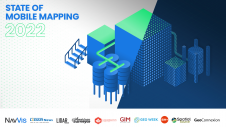A Time of Creation and Change - UN-GGIM 7th Conference
At the beginning of August 2017, the United Nations Committee of Experts on Global Geospatial Information Management (UN-GGIM) (the official United Nations consultative mechanism on global geospatial information management) hosted its seventh annual session at the UN Headquarters in New York. Despite it not being as well publicised as other UN conferences, the event outcomes were nothing less than ground-breaking.
Before going into detail about the conference, it’s important to note that the recent achievements in New York were based on many years of hard work. Consensus and agenda building required bringing together geospatial users within various UN divisions, stakeholders from UN Member States (mainly national mapping and statistical agencies), contributors from intergovernmental organizations (such as the Group on Earth Observation (GEO)), along with members from academia and the private sector. Industry and standards organisations such as the International Federation of Surveyors (FIG), the International Society for Photogrammetry and Remote Sensing (ISPRS), the International Organization for Standardization (ISO), the Pan-American Institute of Geography and History (PAIGH) and the Open Geospatial Consortium (OGC) also played an important role throughout the process.
And so, in August this year, 90 countries and international organisations active in the field of geospatial information management (including a less typical member of the geospatial community - the World Bank) met to discuss 17 substantive agenda items which were, in typical UN-GGIM fashion, as wide-ranging as they come. However, if one was to break it down, the 7th conference in New York last August was essentially about two things - change and creation.
The conference was about changing existing systems, approaches and institutions so that they could become more responsive and resilient in the face of social, economic and environmental pressures. This change includes improving processes whereby regional committees and UN-GGIM networks contribute to the global agenda and management of geospatial information. The conference also included changing existing practices relating to land administration and management, the improvement of national institutions, and the refinement of legal and policy frameworks and data sharing arrangements between and among members.
The UN-GGIM conference was also about creating new systems, new approaches and new institutions. Participants discussed the establishment of two new Working Groups on Legal and Policy Frameworks, and Marine Geospatial Information as well as matters relating to the adoption of a Strategic Framework on Geospatial Information and Services for Disasters. Other areas of discussion included the endorsement of an overarching framework for national institutional arrangements on geospatial information; and a collaborative agreement with the World Bank to implement a new initiative to assist low-income countries to develop their national geospatial information systems. The conference also laid out the participating member’s plans to promote the wider integration of geospatial information with statistics for the purpose of meeting the UN’s Sustainable Development Goals (SDGs).
Going forward, significant emphasis will be placed on raising the bar in terms of geospatial data management practice and on ensuring that all relevant parties have the resources and capacity to improve their national systems. Future action by the UN-GGIM will focus on deeper engagement and consensus-building, better coordination of activities and on developing a greater understanding among policy and decision-makers, planners and delivery agents of the potential which geospatial presents. Efforts will be focused on understanding the differing needs and requirements of member countries and on developing action plans, guidelines, and implementation tools which will help them to develop accordingly. This effort will include the establishment of a template framework and roadmap which members can reference and navigate when developing national geospatial systems which are tailored to their own requirements.
The recent UN-GGIM conference was, through the processes of creation and change, about bringing established bodies and institutions into the digital age and about creating modern and transparent data-driven systems of governance. It was about promoting the use of geospatial information in order to achieve the UN’s Sustainable Development Goals and in so doing it was about regaining the public’s trust in democracy. Since, as the world well understands, finance plays a key role in the well-being of the planet and its inhabitants, the inclusion of the Work Bank in this process should be welcomed as a milestone achievement in the history of the UN-GGIM. Considering all of this, it’s little coincidence that the 7th UN-GGIM conference was a lucky one.
This article was published in GIS Professional October 2017
Make your inbox more interesting.Add some geo.
Keep abreast of news, developments and technological advancement in the geomatics industry.
Sign up for free

